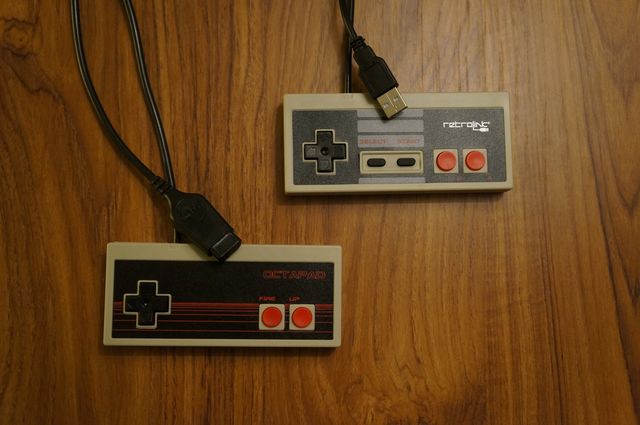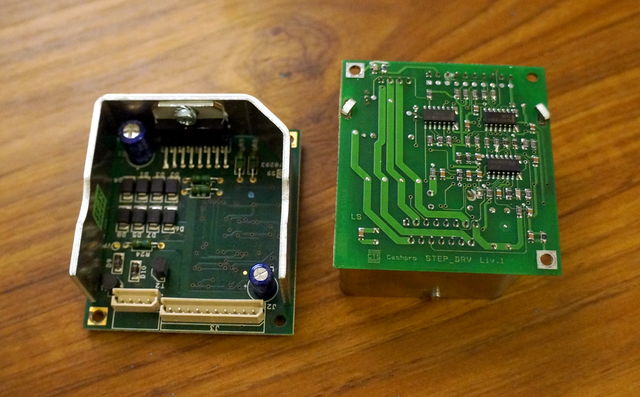I am currently in the process of buildning a replica of the classic Roland TR-909 drum machine. The replica is called Din Sync RE-909, and it is a very faithful reproduction of the original machine.
 Original TR-909 display to the left, the display from RE-909 BOM on top and my display module to the right
Original TR-909 display to the left, the display from RE-909 BOM on top and my display module to the right
Read more
If you are searching for an Atari compatible joystick for your classic computer you have plenty of options at your hands. If you on the other hand, are looking for a gamepad—you are pretty limited in your options.
Available or not, I really wanted a good gamepad to use with my Commodore 64.
Joysticks vs gamepads
One thing that I really can't get through my head is why joysticks continued to be the main game controller type for these computers for such a long time after NES and SEGA Master System entered the scene. A gamepad is in my opinion superior to a joystick in all aspects; they are more responsive, have better ergonomics and are cheaper to produce.
 My finished NESsy gamepad next to the RetroLink!
My finished NESsy gamepad next to the RetroLink!
Read more
I can't help looking at what others leave behind themselves when I discard of my own junk. Electronic junk is the most exciting because it is a very good source for free parts and inspiration. If I find anything that prevents me from buying new stuff, it is a win for the environment as well.
Stepper motors
The stepper motors are manufactured by Minebea-Matsushita and are labeled 23LM-C355-50V. A search on Google does not return a exact match but other motors beginning with 23LM-C355 can be found. These motors are both bipolar and unipolar but share some properties; they all operate at 24VDC and have a step angle of 1.8 degrees. The motors I've found have four wires, and therefore, are bipolar. Measurements with a multimeter revealed that the red and yellow wire are connected to one coil, thus blue and orange are connected to the remaining coil.
 Stepper motor controllers.
Stepper motor controllers.
Read more
I like it when a DIY project has that extra touch or finish that makes it stand out and hard to separate from a professional product. Front panels are one of those things that are quite hard to create in a professional manner. I have found a couple of guides on the internet on how to make DIY front panels, none of which demonstrates a method that, in my view, produces satisfactory results.
Professional plastic overlays
Professionally made plastic overlays comes in different shapes and materials, and can be found on almost every thinkable device with a control panel. They can be made of a number of materials including polycarbonate, polyester, PVC and vinyl. Plastic overlays often have features such as indicator windows for LEDs and displays, cut-outs and embossed areas for buttons.
 The result of the epoxy glue mould process. Note the LED indicator window!
The result of the epoxy glue mould process. Note the LED indicator window!
Read more
 Original TR-909 display to the left, the display from RE-909 BOM on top and my display module to the right
Original TR-909 display to the left, the display from RE-909 BOM on top and my display module to the right

